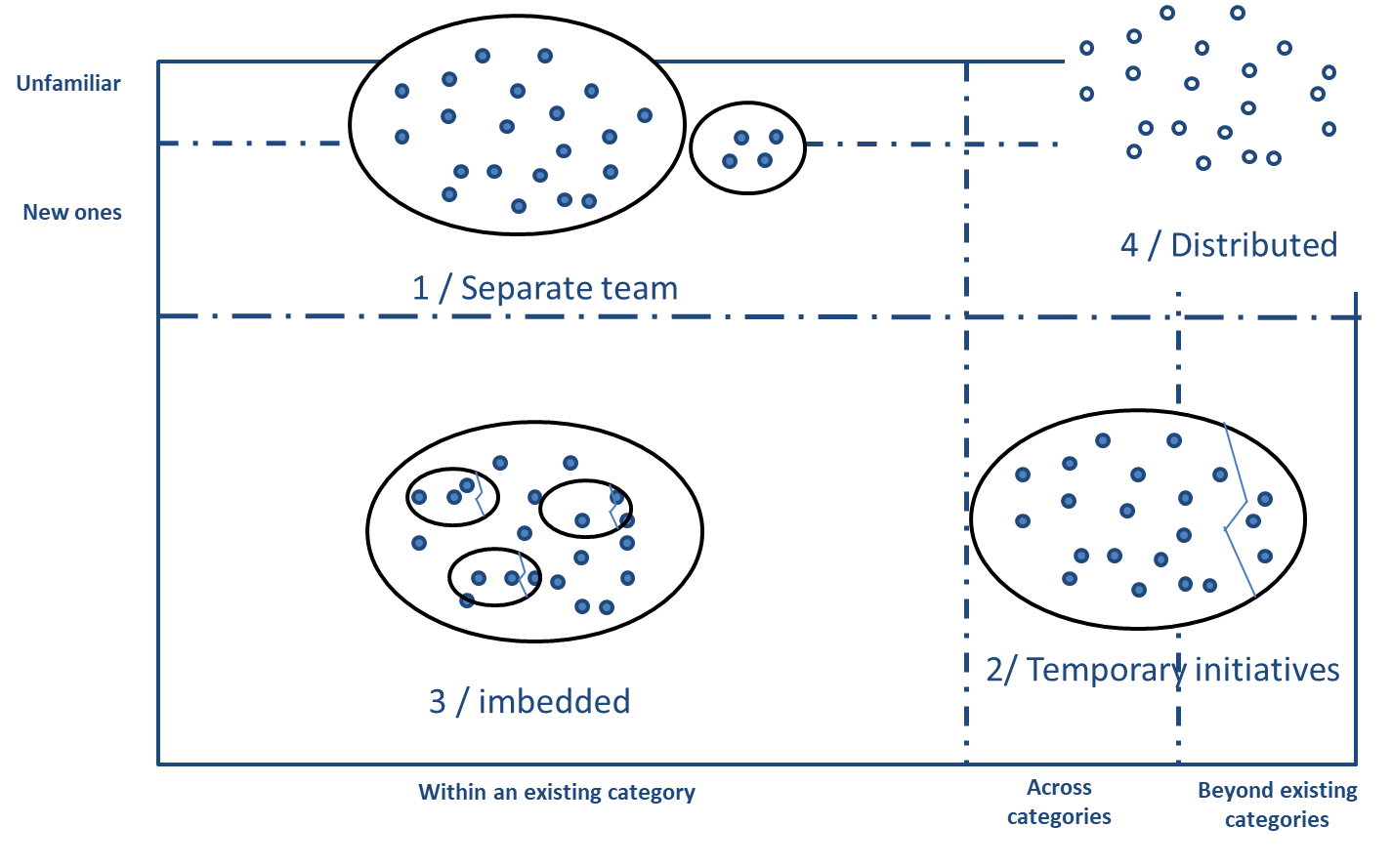Searching and Selecting an Innovation Partner
by Hervé Legenvre, PhD EIPM
采购必须要创新
Buyers are keen to contribute to innovation these days.
As this takes them outside of the beaten tracks, they perceived a need to review how they search and select suppliers and partners. Some have created separate parallel processes, others have expanded on their existing practices.
Today I will describe some approaches that works and most importantly I will discuss Why and When they work by proposing you a framework
When we intend to buy a product or a service, we both assess the product or service and the viability of the partner (financial stability, compliance, operational performance, responsiveness…)
When we intend to access innovation, we partially know what solution we need and how to find and assess its providers.
我们要寻找没有切割的钻石
Following the metaphor of Jean-François Baril,
“We look for uncut diamonds”

We search for innovative capabilities or for new ideas on how to solve a problem. Such uncut diamonds might come from an existing supplier, a new supplier, from our industry or from another industry. It can come from a start-up, a giant tech company or a not for profit organisation. So, we need to adapt to diverse situations and find the best way of searching and selecting an innovation partner.
需要回答几个问题
Here assessing the ideas, the capabilities and the partner that provides them can require to answer challenging questions:
- How do we get access to ideas well beyond the usual suspects?
- How do we learn from what the partners can offer?
- How do we convey needs that remain fuzzy and can change over time?
- How do we assess a partner that speak an industry language different from ours?
一个分析工具
The following picture will help you with this. It is here to suggest you some options and to help you seize the challenges associated with different situations. It is here to guide you but you will need to find the right way of doing it for your own context. The more you will depart from the bottom left, the more you will need to come up with an idiosyncratic approach..
On the X axis, this is what you look for…. A product or service, an innovative capability or ideas on how to solve a problem so you can generate value. Then, on the Y axis you have …. Who is providing it to you, it goes from an existing supplier to a very unfamiliar player?

传统采购
If you want to get a product or service from an existing (or new supplier) you can use your traditional RFI/RFP process. You might use the product or service to deliver something innovative, but the selection process is no different from another purchase.
创新采购
一个智慧的流程
Let’s move further if you want to buy an innovative product from less familiar supplier, face to face collaboration and exchange is needed to understand what can be achieved and what can be done. An Agile RFP process can be perfect for this, it will most certainly require to setup an event with all stakeholders and suppliers present. It will be engaging, simple and efficient but it will transform uncertainty into value while making key discussion happen rapidly.
一个例子
Then, to get access to capabilities outside of our industry, a benchmarking & scouting process can be well suited.

The NASA has benchmarked DISNEY on how to launch complex projects for instance. If your problem and the partner solution are a perfect match, this will be smooth. If mutual adaptation is needed it will require multiple workshops to create the business, product and organisational alignments over time.
一个方法
In some cases, the partner might quite unfamiliar. Exchanging with Data scientists for a company with a long legacy is challenging….

Here you can create an innovation competition so your potential partners can demonstrate what they can deliver: Provide them with a problem, a data set and give them a short amount of time to send you a mock-up. Here you can focus on assessing the outcome. Some assessment of the organisation can take place at the right time but the focus of it is to understand how gaps can be closed.
再一个方法
In other cases, you need to move rapidly from ideas to capabilities, you might be working with an existing partner on a brand-new technology or a business model. This can only be done by working closely together on a repeated basis….
You can organize a series of innovation workshops to solve problems together, to come up with diverse prototypes rapidly, to design business models and to prepare the next step. The selection process becomes more a funnel than a single filter.
第三个方法
Finally, you might solely be looking for new ideas, new solutions that can come from many people, you can organize a hackathon with students, or you can use an open innovation platform like innocentive, ideaget, ninesigma or others. There are many options and vehicles for this. But the principle is always the same you post a problem somewhere so others can solve them. Here you assess the solution and not the full service or organisation. It feels very different from the classic purchasing process but when you look at one of these platforms you will see that it is much closer than you initially believed
总结,通过多样化的实践,用正确的方法解决正确的问题
To conclude, a world of innovation requires more than a one-trick pony, we need diversify our practices and most importantly we need to use the right one for the right problem. I hope this short article has helped you with this challenge.
Hervé Legenvre, PhD
EIPM Value Creation Observatory Director
Share this:
- Click to print (Opens in new window)
- Click to share on Facebook (Opens in new window)
- Click to share on LinkedIn (Opens in new window)
- Click to share on Twitter (Opens in new window)
- Click to share on Google+ (Opens in new window)
- Click to share on Pinterest (Opens in new window)
- Click to share on Skype (Opens in new window)
- Click to share on WhatsApp (Opens in new window)





